Hélène Hoppenot
and 1930s women modernist photographers in Southeast Asia
Gael Newton AM
Background notes, January 2024
As Senior Curator Photography at the National Gallery of Australia, Canberra between 2006-14, I was responsible for building a collection surveying the first century of photography in the Asia-Pacific region. That collection was showcased in two exhibitions; Picture Paradise: Asia-Pacific Photography 1840s-1940s in 2008 and Garden of the East: Photography in Indonesia 1850s-1940s in 2014.
Women photographers had a small profile in those exhibitions as little had been written on their role in general across the Asia-Pacific. Original prints by any of the known women photographers in the region were also hard to source for the collection. Some women were represented by their books.
A good selection of prints by Dutch photographer Thilly Weissenborn working in colonial era Indonesia were acquired through Amsterdam based rare book dealer Leo Haks whose Indonesia historical photographs collection the National Gallery acquired in 2007.
An opportunity arose to submit an article to the French magazine Banian focusing on Indonesia arose in 2014. My study was weighted towards French Hélène Hoppenot, in the context of her contemporaries; German Hedda Morrison, Thilly Weissenborn and Dutch Ellen Thorbecke.
In the decade since my consideration of these wonderfully energetic amateur and professional photographers so successful in their lifetimes but undervalued posthumously, have received more study, exhibition, publications and profile in the history of photography.
The role of women photographers in general has also received sustained and growing attention internationally. A specialist study in 2020 by my friend Anne Maxwell, Women Photographers of the Pacific World, 1857–1930 is available as an e-book. The next generation awaits similar close study.
My original submission to Banian was too focused on China and thus not accepted. Posting the article now a decade later I have not updated the text but included links below the piece to some of the later material now available on all three.
Original Article - 2014
Comme j'aimerais faire craquer cette planète trop étroite, sauter sur l'un de ses morceaux et partir à la découverte de l'univers!
("How I would like to make this too narrow planet crack, to jump on one of his pieces and set off to discover the universe!)
Hélène Hoppenot, Journal 1927.
Very few women photographers were at work in Asia in the late 19th century but a number of female travel writers collected and made their own photographs for use as illustrations for their books and lectures. Their number included remarkable explorers such as Isabelle Massieu, the first woman to travel alone in Indochina in the 1890s.
The most notable woman travel writer to visit Indonesia was the American Eliza R Scidmore whose 1897 book Java Garden of the East, became a best-seller. Scidmore’s book had a number of illustrations drawn after uncredited photographs by Kassian Céphas the celebrated Javanese photographer in Yogyakarta. This lack of recognition of photographers was a common practice at the time.
Photography was not seen as an art.
One of the earliest modern camerawomen in Southeast Asia was Dutch professional Thilly Weissenborn (1889-1964). Born in Java but raised in Amsterdam, Weissenborn trained in the O Kurkdjian studio in Surabaya from 1913-17 before establishing her “Lux” photo studio in the resort area of Garut, West Java. Weissenborn was one of the chief suppliers of luminous images of the landscape and people of Java, Sumatra and Bali for the booming Dutch tourist cruise industry.
Her 1924 deluxe portfolio of photogravures on Bali was aimed at the affluent tourist market.The Japanese occupation in World War II brought an end to her studio, the tourist trade and Dutch colonial rule.
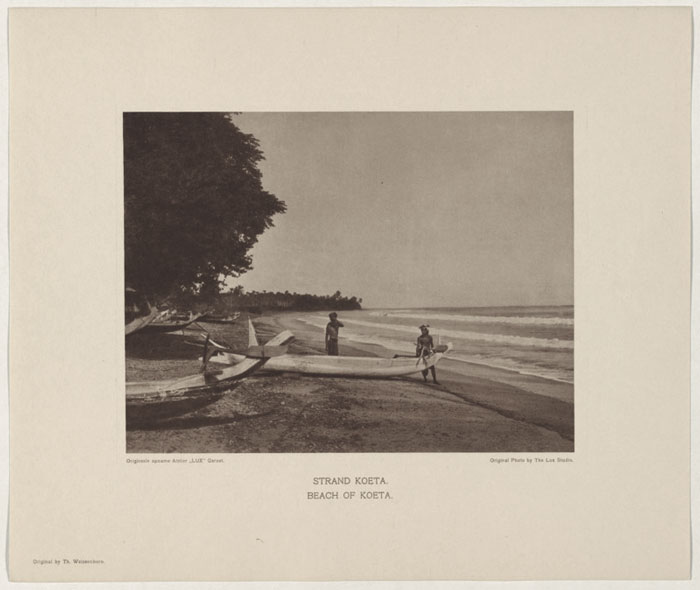 |
| #01 Thilly Weissenborn, (1883 – 1964) Beach of Kota plate from portfolio Bali, Photo-Atelier “Lux” Garoet, Java, 1924 photogravure, National Gallery of Australia |
| |
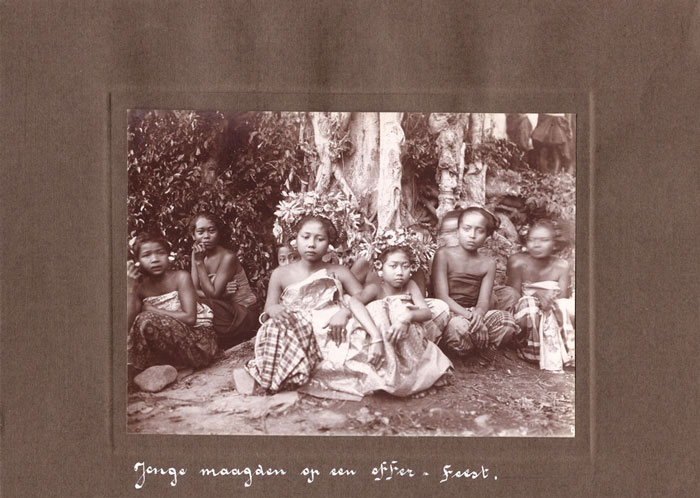 |
| #02 Thilly Weissenborn, Young girls at a sacrificial feast, Bali gelatin silver photograph c 1925 Collection National Gallery, Singapore |
In the mid 20th century a new generation of women photographers based for long periods in Asia appeared for whom photography was a passion. Hélène Hoppenot, Hedda Morrison and Ellen Thorbecke are three European contemporaries whose careers overlapped in China in the mid 1930s and whose separate journeys later took them through Indonesia. For these mid-20th century artist-photographers the medium was both art and information.
Their mezzotint-like prints drew on romantic Pictorialist style art photography dating from the early 1900s but also on the boldly designed modern photography in picture magazines and art books of the 1920s and 30s. Between them they produced a very considerable body of beautiful and informative photography but their achievements are not recognised today in any major photographic histories.
Hélène Hoppenot nee Delacour was born in Paris in 1894 and was considering a career as a concert pianist when she met and married Henri Hoppenot (1891-1977) a young French writer and poet appointed as attaché to the French embassy in Berne in 1917. After their marriage Hélène accompanied Henri on his posting to Brazil as secretary to Paul Claudel newly appointed Minister Plenipotentiary to the French Legation in Rio de Janeiro where he was living with the musician Darius Milhaud, the Secretary since 1916.
Claudel was a writer, poet and playwright. French diplomats between the wars were clearly not the bureaucratic political experts of today!
In Rio Hélène Hoppenot was caught up in Claudel’s newfound passion for photography in which he was being instructed by a local French resident amateur photographer André Perrin. Hélène posed for Claudel in Perrin’s studio where he experimented with dramatic side lighting that would become known later as ‘Hollywood Lighting’.
Through these studio sessions Hélène may have discovered how photography could express the poetic as well as the prosaic world. She was already familiar with photographic processing. Henri was a competent photographer and had documented their developing relationship in Berne as well as their travels in the Middle East, South America and Europe in the 1920s-30s.
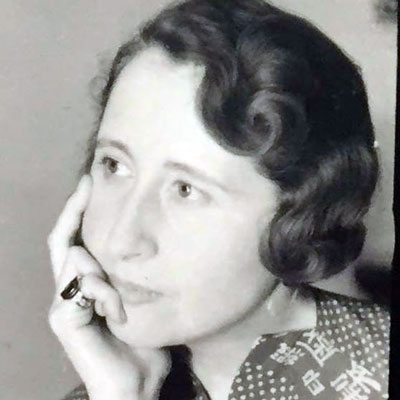 |
|
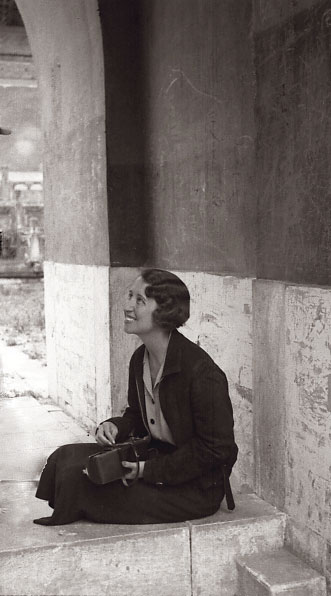 |
#03 Hélène Hoppenot (1894-1990) Portrait taken in China 1930s
https://www.facebook.com/journalhelene.hoppenot/ |
|
#04 Photograph taken in Peking showing Hélène Hoppenot with her camera
June 25, 1937, Journal, "Who will return my China?
See Hélène Hoppenot, Journal 1936-1940, introduced and annotated by Marie France Mousli. Ed. Claire Paulhan 2015.
https://www.en-attendant-nadeau.fr/2016/05/30/coulisses-histoire-hoppenot/ |
Hélène Hoppenot’s creative activity before her arrival in China was devoted to writing a journal - the first volume of which recently been published by Hoppenot Archive specialist Marie France Mousli.2 Hélène’s artistic ability was considerable. She contributed a striking modernist montage to the cover of a booklet on the maquettes for a ballet written by Claudel and composed by Darius Milhaud in Brasil, L’homme et son désir
By the time of Henri Hoppenot’s posting as conseiller to the French Legation in Peking in 1933, Hélène had become entranced with photography. In Peking she made rapid progress using a new professional quality German Rolleiflex camera bought from Hartung’s Photo Shop. Her surviving images from China show Hoppenot’s sophisticated aesthetic used a rather soft focus style of art photography but also modernist concepts and design.3
It is not known how much contact Hoppenot had with Hedda Morrison nee Hammer (1908-1991) the young German photographer managing Max Hartung’s Photo Shop. Morrison had trained at the State Institute for Photography in Munich and worked for Hartung’s from 1933-38. Hedda worked freelance in Peking until 1946 when she left China with her Australian diplomat husband, Alastair Morrison. The Morrisons were in Hong Kong in 1946 and then based in Sarawak until their retirement to Australia in 1967.4
Hedda Morrison produced a large body of photographs of China. She marketed portfolios of photographs in decorative Chinese style portfolio cases while in Peking and published her Sarawak work in several books in the 1960s.
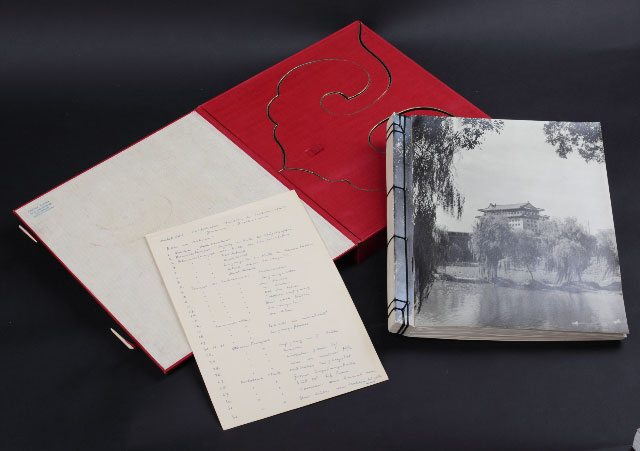 |
|
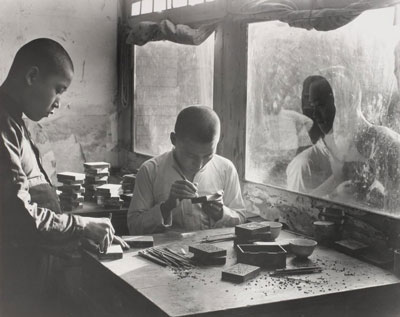 |
#05 Hedda Morrison (1908-1991) Presentation portfolio c 1930s
sold at auction |
|
#06 Hedda Morrison Carving lacquer China between 1933-46 gelatin silver photograph Art Gallery of New South Wales, Gift of Dr Jim Masselos 1994
https://www.artgallery.nsw.gov.au/collection/works/346.1994/ |
Another young woman photographer at work in China in these years that Hoppenot knew in Peking in 1934 is Ellen Thorbecke, nee Kolban, aka Ellen Catleen (1902-1973) a journalist from Berlin. She had come to China in 1931 to be with her future husband William JR Thorbecke, the Netherlands Ambassador in Shanghai. By 1934 Ellen had become so expert using her new Rolleiflex camera that her photographs were published in a series of modern style photobooks and children’s stories done in collaboration local Austrian artist Friedrich H Schriff who provided colourful drawings.5 Other photo books followed.
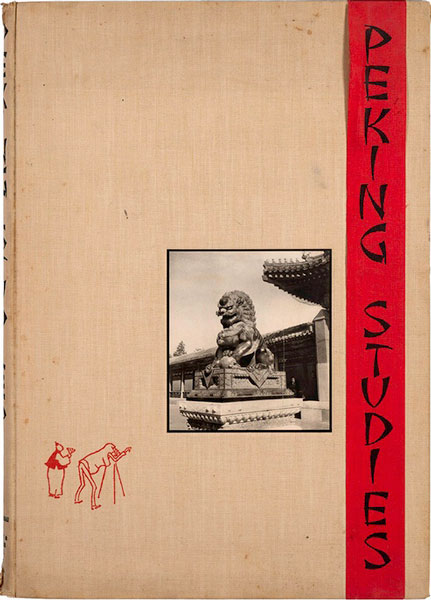 |
|
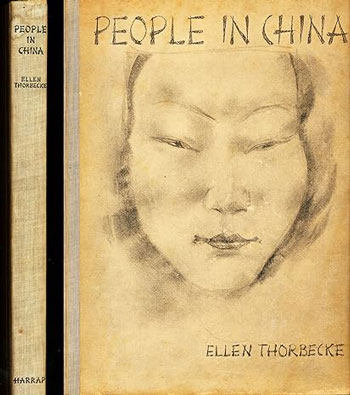 |
#07 Ellen Thorbecke (1902-1973) Peking Studies #09 Kelly & Walsh,
Beijing, 1934 |
|
#08 Ellen Thorbecke People in China Thirty-Two Photographic Studies
from Life London : G. Harrap & Co 1935 |
Having left China in January 1937 at the close of Henri’s appointment, the Hoppenot’s return voyage included a stop in Indonesia in February. Hélène’s literary abilities are seen in her apt description of Berastagi, North Sumatra, as having the ‘Fraîcheur verte fondante comme une pastille de menthe’ and her comment on seeing the immense inland crater Lake Toba, ‘Me souvenir que je puis – pour un temps – être totalement heureuse devant un grand paysage’. 6
Hoppenot’s images of China can be seen online though the website for the Fonds Hoppenot in the archives of the ministère des Affaires étrangères, Quai d’Orsay. The images from Sumatra, Java and Bali are not yet digitised.
A rare glimpse of this chapter of Hoppenot’s career are seen in a small batik covered, cord-tied album sold at auction in 2013 and held in 2018 by Bernard Quartich Rare Books, London. The prints of Indonesia in the album are laid out like a magazine photo essay with landscapes views alternating with close-ups of people.
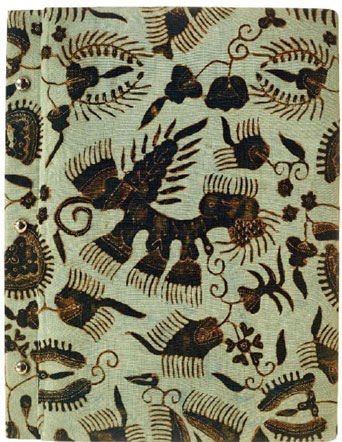 |
|
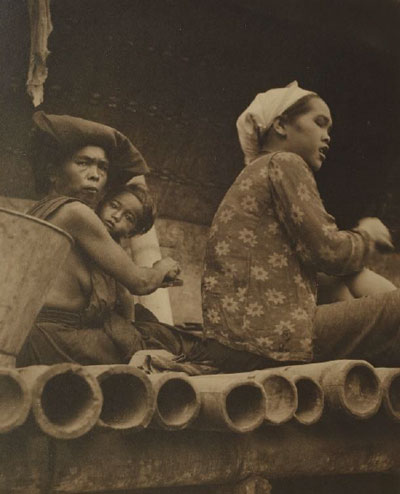 |
| #09 Hélène Hoppenot batik covered album one of two from 1937 featuring Southeast Asia image courtesy Bernard Quaritch Rare Books London 2014 |
|
#10 Hélène Hoppenot. Sumatra image Quaritch albums |
Several images of a cremation ceremony are shown across successive pages. Hoppenot places the viewer in the scene and has given her images a cinematic flow. Such action sequences are rare in Hoppenot’s China work.
Hoppenot may have seen the remarkable action photographs of Balinese architecture, rituals and customs taken by Dr Gregor Krause the German doctor working for the Dutch Military in Bali in 1912. Krause’s evocative and sensual images were published in Germany in 1921 and inspired a generation of artists, writers and tourists after World War One to make their way to Bali to this tropical ‘Last Paradise’.
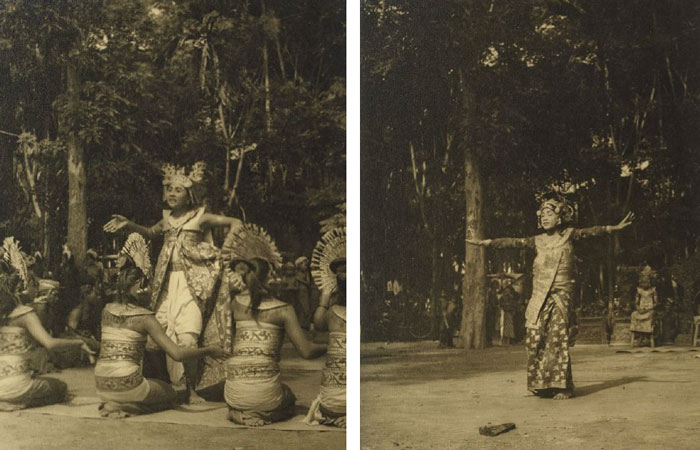 |
| #11 Hélène Hoppenot Balinese dancers Quaritch albums |
| |
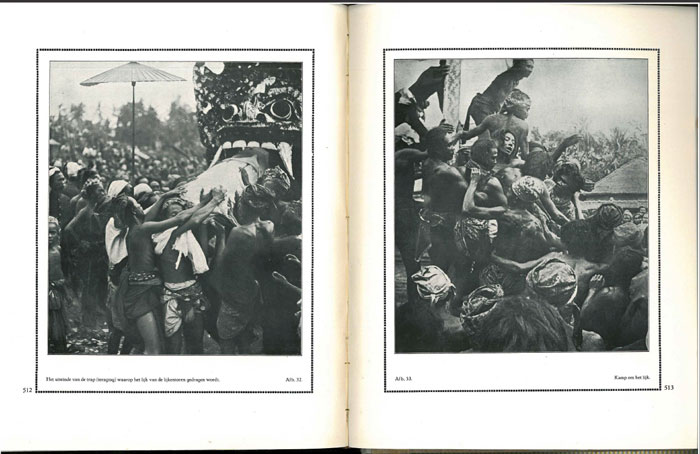 |
| #12 Dr Gregor Krause (1883-1959) funeral ceremony, Bali 1912 |
The Hoppenots departed Jakarta on 18 March for Sri Lanka and then France where Henri was Sous-directeur d’Asie then d’Europe in Paris7 until 1940. 8 Henri’s career in the 1950s and 60s was involved with the Conseil de Sécurité de L’ONU and as a member du Conseil d’État francais.
Hélène Hoppenot’s albums were not for sale. Her public image was as a diplomatic wife. Her profile as an artist-photographer came about in 1946 when avant-garde Swiss publisher, Albert Skira saw her photographs of China hanging in the Berne embassy. Skira published Hoppenot’s work in a handsome large format art book titled Chine with eighty high quality photogravures and a poetic introduction by Paul Claudel famous as a writer/poet in France.
In Chine images of architecture and objects dominate. The carefully edited pairs of images have a rhythm that flows flow through the whole book like the notes of a score.
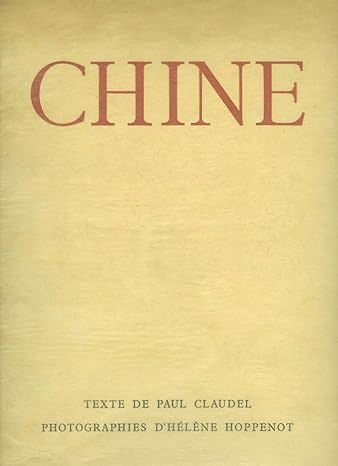 |
|
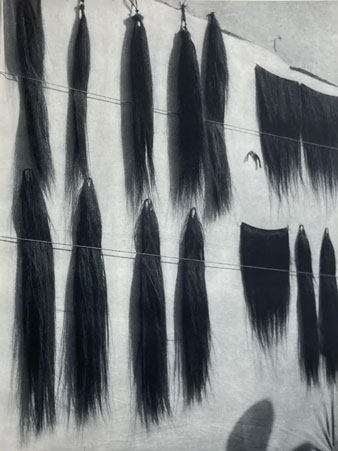 |
| #13 & 14 Hélène Hoppenot. Cover and page of Chine, Skira 1946 text Paul Claudel |
| |
|
|
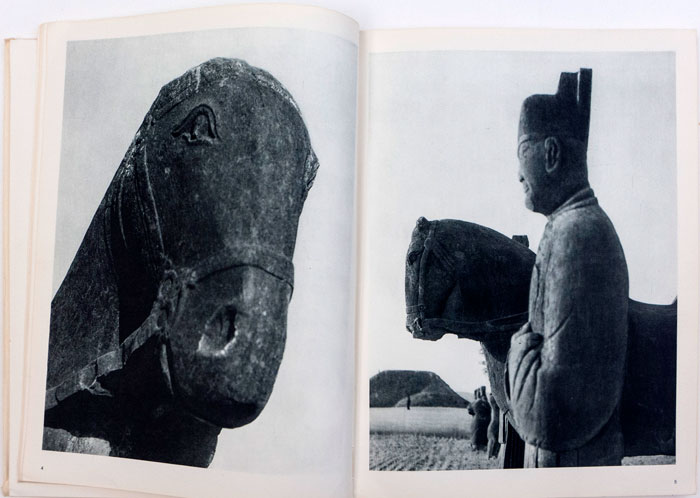 |
| #15 Hélène Hoppenot page spread from Chine |
There is only a simple title list with no dates and no explanatory text about the images. Hoppenot’s dramatic but austere and sombre images fill the whole page and have a very strong emphasis on their abstract design. The very aesthetic even elegiac tone of the layout of Chine may reflect the knowledge in 1946 of the fate of Peking during the Japanese invasion of July 1937.
Hoppenot’s next book Extrême-Orient was published in Neuchatel and Paris in 1951 by Swiss press Ides et Calendes.
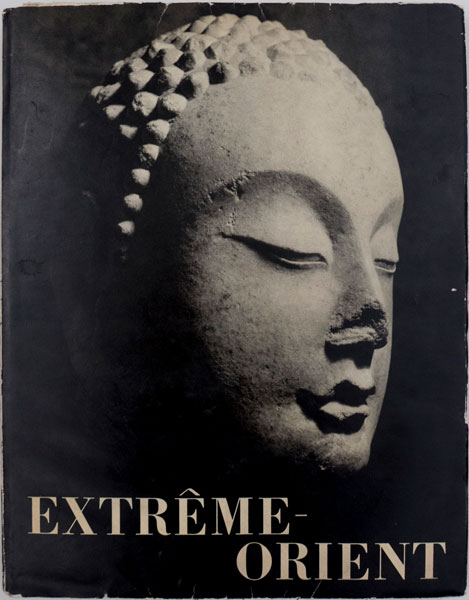 |
|
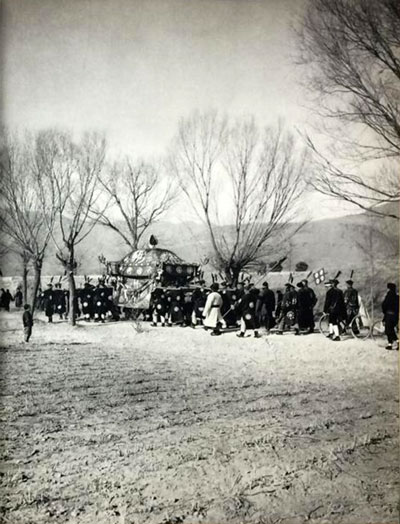 |
| #16 & 17 Hélène Hoppenot Extrême-Orient Éditions Ides et calendes, Neuchâtel, 1951 |
| |
|
|
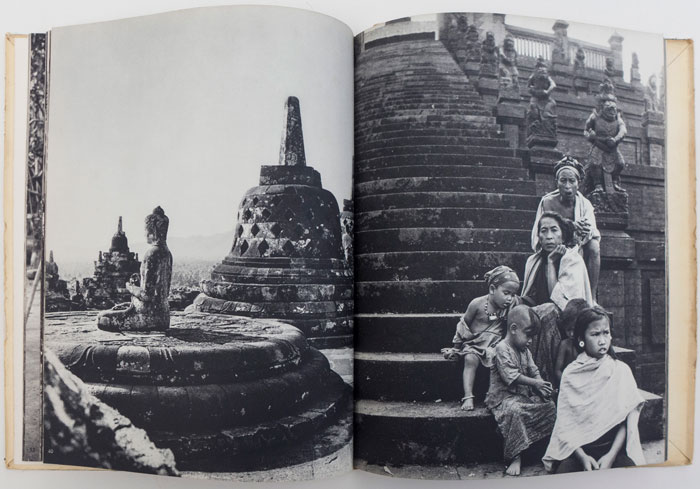 |
| #18 Borobudur, Java page spread from Extrême-Orient |
It had more varied images of places, monuments and peoples in China, Japan, Indochina (Cambodia, Vietnam), Indonesia (Bali, Sumatra, Java) and Macao, Korea and a poetic preface by Henri as the work was drawn from the couple’s travels on four continents.
The format has a more conventional photo-essay format and greater engagement with the peoples of the different lands than in the earlier Chine. There is no explanatory text other than an index at the rear with short titles for the plates.
Extrême-Orient however, is clearly meant to be a poetic art book not a travelogue. It anticipates the kinds of juxtapositions of photographs of similar cultural icons widely separated by time, place and culture developed by French Cultural Minister, André Malraux in his famed photobook, Musée Imaginaire of 1948.
Like the Chine book, the mood of Extrême-Orient is sombre. The reason hinted at in the preface where Henri mourns the passing of the ancient civilizations,‘Gone, those fragile surfaces whose spent smoke united the living to the invisible, gone, the gloss of those naked breasts in the tropical rain. Gone those white-clad passers-by in the valleys of the peaceful morning’.
Between 1952-55 Hélène Hoppenot published a series of more conventional but still high quality travel books on Tunisia, Rome, Mexico and Guatemala, published in Lausanne. There were no publications after 1955 and Hoppenot seems not to have been as active as a photographer after 1964.
Hélène Hoppenot emerges as a significant photographer of the modern age working in Asia. She did not expose the ugly realities that as a diplomat’s wife she would have seen with her own eyes in the lands she visited. Hers was not the post-war social vision of the photojournalists like Henri Cartier-Bresson. The latter visited new Republic of Indonesia in 1949 and published his own dynamic images of a people alive and on the move in a small book Danses a Bali in Paris in1954.
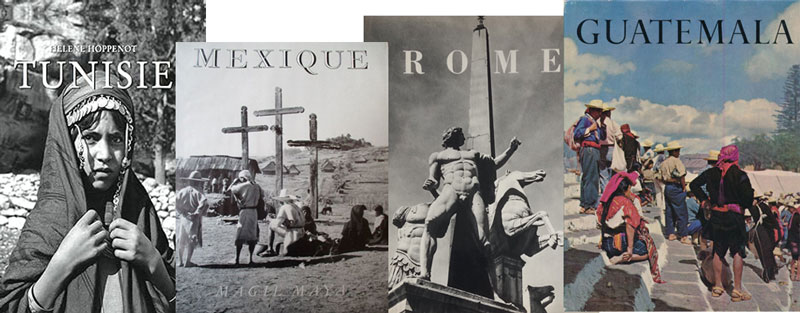 |
| #19 Hoppenot travel books |
Like many artist of the era Hélène Hoppenot sought to capture the remains and echoes of ancient worlds. Her books deserve a place in histories of the golden age of photographically illustrated magazine and book publications of the mid 20th century.
2024 Related Links
In 2016, the Pavillon Populaire in Montpelier presented 'Le Monde d’hier 1933–1956', an exhibition of works by Hélène Hoppenot.
In 2018 the roles of the women photographer's role in travel photography was the subject of an exhibition in 2021-2022 at the National Gallery of Art, Washington.
There are 27 images by Hoppenot on the web page for the Musée d'art moderne de la ville de Paris.
Anne Maxwell 2020: Women Photographers of the Pacific World, 1857–1930
1921 Review: Ellen Thorbecke: From Peking to Paris
Interview with curators Ed Stokes and Elaine Wong on the 2022 Honk Kong exhibition: Recovery, Resilience, Resurgence.
Australian Dictionary of Biography entry: Hedda Morrison
2005 Hedda Morrison's Hong Kong
2014 Footnotes:
- Christelle Laurent, Isabelle Massieu. De la collection à l’acte photographique. L’itinéraire d’une Française en Asie, Paris, C. Laurent, 2001
- See Hélène Hoppenot, Journal 1918-1933, édition annoté, établie et préfacée par Marie France Mousli, Éditions Claire Paulhan, 2012.
- Photographs by Henri and Hélène Hoppenot are held at the Archives du ministère des Affaires étrangères, Quai d’Orsay and the Bibliothèque Nationale de France, Paris.
- Hedda Morrison’s East Asia archive is held by the Harvard-Yenching Library, and the Powerhouse Museum, Sydney. A group of Sarawak prints are held by the National Gallery of Australia, Canberra.
- See Ellen Catleen, Peking Studies, Kelly & Walsh, Shanghai, 1934. Mysterious China H.D. Leopold in Den Haag,1937. Her Peking studies book was sponsored by Franke & Heidecke, Braunschweig the German makers of the Rolleiflex.
- I am indebted to Hoppenot archive scholar Marie France Mousli, Paris, for assistance in particular for details of the couple’s journey back to Europe in 1937 and that Hélène Hoppenot’s Ephémérides book of notes on her itinerary, travels, meetings, films and etc, lists dinners ‘chez Thorbecke’ between January 1934 and February 1935.
- The Hoppenots stayed in Paris from 1937 to 1940. Henri as the Sous-directeur d’Asie then d’Europe.
- Henri Hoppenot was posted to Uruguay in 1940. He resigned in 1942 and joined the gouvernement provisoire in Washington, USA. After the war Hoppenot was posted as ambassador in Berne from 1945-1951.
more of Gael Newton's Essays and Articles
|